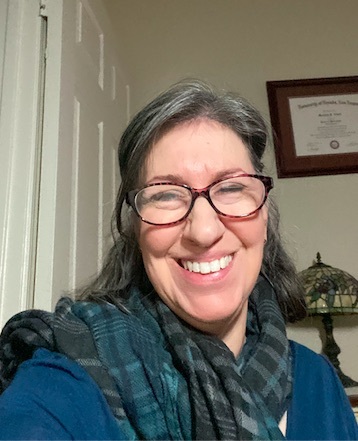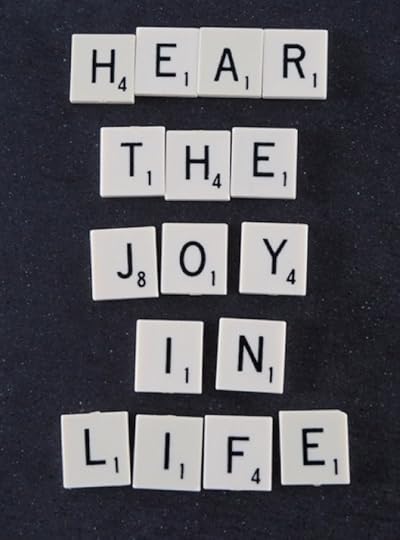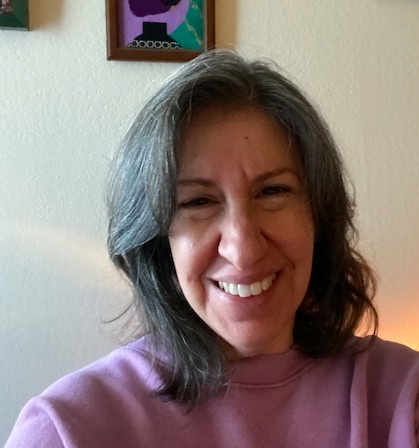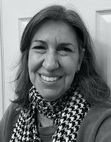Meredith Allard's Blog, page 11
March 10, 2022
Writing Inspiration: Scene Sequels
 Photo by Glenn Carstens from Unsplash
Photo by Glenn Carstens from UnsplashI shared the concept of scene sequels in my book Painting the Past: A Guide for Writing Historical Fiction. Another novelist introduced me to scene sequels about 10 years ago and I’ve been using them ever since.
Yes, there are scene sequels in The Duchess of Idaho. I’ve found them very useful as I’m putting the finishing touches on the book. When I began writing DOI, I could see the internal and external conflicts for Grace Wentworth, my main character, so clearly in my mind, but I was having trouble articulating what I knew on the page. I used scene sequels as a way to slow down and allow my characters, and my readers, time to think through the various events that Grace encounters on the Oregon Trail.
The scene sequel takes place in four steps.
Step 1: Emotion
This is where the character is reacting to what has happened. In that moment when something happens, we feel it first. Before rationality, before logic, there is emotion.
Step 2: Thought
When the emotion of the moment fades away we begin to think. Sometimes logically. Sometimes not. But the intention is to make sense of what is happening. What does this really mean? What is the right thing to do? For me, the thought stage is where the character questions what has happened, what should have happened, what might happen. If I do A, will B, C, or Z result?
Step 3: Decision
After the thinking is done, what will you do? What will Grace do after she learns her parents’ secret? What will she do about her own secret? The decision is the moment when the character chooses one way or the other based on their thoughts about the event.
Step 4: Action
This is the result of the decision. Once the decision is made, then the character has to do something about it. Sometimes the decision is to sleep on it. Sometimes the decision is to deal with it later. But there should be some kind of culmination to the thinking and the decision.
The novelist who told me about scene sequels said she kept the formula on a sticky note on her computer for years to keep the steps fresh in her mind as she was writing. The formula is relatively simple, yet it allows us to understand the characters and their experiences on a deeper level. I think part of the reason scene sequels work so well is because they mimic our real-life process of dealing with whatever it is we have to deal with. First we react in an emotional way, then we think about it, then we decide what to do, and then we do it (or we decide to do nothing, which is also a decision).
A scene sequel isn’t the kind of thing you want to use at every little event, but whenever something momentous happens it’s helpful to slow down and allow your characters to feel, think, decide, and do. This will create a richer, fuller story for your readers.
March 3, 2022
Writing Inspiration: Allowing Room For Freedom When Writing Fiction
 Photo by Patrick Tomasso from Unsplash
Photo by Patrick Tomasso from UnsplashFor my first bit of news, on Tuesday, 3/1, I had the chance to participate in a Q&A for Rachel Thompson’s course Lit Mag Love, which helps writers who want to submit their work to literary journals. I had a wonderful time answering the questions. It’s a five-week guided course, and the next session starts on May 15. Interested? You can join Rachel’s waiting list here: https://rachelthompson.co/litmaglove/
For my second bit of news, for those of you who follow my blog to keep up with my latest book news, I’m pleased to announce that The Duchess of Idaho is finished and being polished up as we speak. The official publication date is 3/29/22. I can’t wait to share it with everyone.
For my third bit of news, I’ve finally updated my headshot. I’ve been wanting to do it for some time, but I wanted to wait until my natural (gray) hair had grown out enough that there wasn’t an obvious line of demarcation, which was about a year and a half (no joke). You can see it here.
Writing The Duchess of Idaho reminded me that there’s always a point while I’m writing a new novel where I’m reminded of Dorothy Parker’s great saying, “I hate writing but love having written.” There’s a lot going on in this little (okay, maybe not so little since it’s 100,000 words) book, and it took time for me to see how the pieces fit together. And there are a few pieces.
While The Duchess of Idaho isn’t a sequel to the Loving Husband Trilogy (it’s a stand-alone story that acts as the beginning of its own series) it still has many of the same characters from the Loving Husband Trilogy and it had to go along with the world that had already been established. The Duchess of Idaho is the first time I’ve written a time-travel story. I wrote a bit about that experience here. The Duchess of Idaho is an embedded narrative, a story within a story. I was writing about a new historical era for me, the Oregon Trail, so I had a lot of research to do. There’s a whole new cast of characters in The Duchess of Idaho. I actually had a list of character names/descriptions in the notepad on my computer so I could keep track of them all.When I began writing Her Dear & Loving Husband in 2009, it took some time for me to understand how to make the past and present storylines work in harmony. It wasn’t until I had the novel professionally critiqued that I understood the flow of the story. Luckily, once I figured out the plot writing the next two books in the trilogy, Her Loving Husband’s Curse and Her Loving Husband’s Return, came easily since they followed the same structure.
My next novel, That You Are Here, was a dream to write. That You Are Here is my only fully contemporary novel, and maybe that had something to do with the fact that writing it was struggle-free. I understood characters immediately and I saw the story play out like a movie, which meant all I had to do was take dictation. That book took me four months to write—crazy-quick, at least for me.
Again, with When It Rained at Hembry Castle there were challenges. I was back to where I was when I wrote Her Dear & Loving Husband—I had this whole new world to figure out. In the Loving Husband Trilogy, there are two points of view, from the two romantic leads, James and Sarah, and two time periods, the present and whichever historical period that novel is set.
When I began writing When It Rained at Hembry Castle, I thought I would use the same two-person point of view as I had in the Loving Husband Trilogy. After beating myself about the head trying to make it work, I realized that two points of view were not enough for this novel. I haven’t yet tried the head-hopping omniscient third-person point of view (one of these days I’ll try that one), but for Hembry I opened the field so that we get the point of view of more than just the two romantic leads (in this case, Edward and Daphne). I limited the POV to one character for each chapter so it isn’t difficult for readers to follow.
When I’m writing fiction, anything goes, which means sometimes it takes a while to figure out exactly what I need to do to bring each new story to life. The two-person point of view worked well for the Loving Husband Trilogy, so I assumed it would work for Hembry. It didn’t. There are too many characters in Hembry, and there’s too much going on for my two romantic leads to be everywhere. I needed to let some of the other characters have their moments in the sun. Once I allowed the characters the freedom to speak for themselves, the headaches started to go away and the novel started to resemble the story I wanted to write in the first place.
For The Duchess of Idaho, there are also several points of view throughout the story, though again I’ve kept it to one character’s point of view per chapter. Primarily, we have the point of view from Grace Wentworth, the main character, but we also hear from her parents, James and Sarah, and her dear friend Olivia Phillips. Like the Loving Husband Trilogy, there’s a past and present storyline, but it plays out differently in The Duchess of Idaho and I had to experiment a bit to see what that would look like in this world.
Once I understand the plot structure and the way the pieces fit together, that’s when I’m in the flow of writing and there’s nowhere else in the world I’d rather be. The first part of writing a novel has always been a struggle for me. That’s when I flap about like a fish out of water (or an asthmatic without an inhaler—speaking from experience), spending hours writing scenes that don’t make sense and have nothing to do with the story I want to tell. Often, as I continue through the writing process, those scenes will be deleted.
Every time I’m about to give up, though, I force myself to keep going because I’ve been at this long enough to know that the “shitty first draft” phase will pass and the story will reveal itself. How much hair I have in the end always remains to be seen, but bald or not bald, I know that I’ll figure out whatever it is that’s not working. This is something I need to relearn whenever I write a new novel, especially a novel set in a new world.
With every new novel I write, I need to remind myself that nothing is set in stone and I can experiment, play, and try new things until I find the winning combination. I could have imposed the two-person point of view on Hembry or Duchess because I’ve had success with it before. Instead, I allowed myself the freedom to play around until I discovered what did work for those stories.
After the heavy lifting is done, I can say that I love having written.
February 24, 2022
The Writer’s Life: Dare to Do Nothing
 Photo by Jonas Leupe from Unsplash
Photo by Jonas Leupe from UnsplashAs I’ve been seeking a simpler writer’s life, one of the things I keep hitting against like a brick wall is the pressure I put on myself to create a miles-long to-do list. There are so many things I want to write and edit and teach and create. As I look over those to-do lists, I’ve been feeling a bit overwhelmed by the sheer number of things I want to get done, so yesterday I shut down and did nothing.
Nothing. As in absolutely. Not one thing. I stayed in bed and caught up on two weeks worth of Coronation Street, an English soap opera for anyone who isn’t familiar with it. Normally, I’m not into soap operas (except Downton Abbey, which I’m pretty sure qualifies as a soap opera), but I like “Corrie” because it’s realistic (to the degree any soap opera can be), it has great characters, and it has a sense of humor. I’m always a sucker for a sense of humor. I made spaghetti and meatballs in my slow cooker, which is about as simple a meal as you can get, and I went to bed early.
I’ve had a lot on my plate lately, as so many of us have. My teaching job keeps me busy during the day. I’ve been running The Copperfield Review pretty much on my own for months now, and I’m currently getting the journal’s second anthology of historical fiction and poetry ready for its close-up next week. The Duchess of Idaho is also getting ready for its close up and I can finally say for certain that it will be released next month. I’ll give you an exact date in March.
DOI has been a challenge, let me tell you. There were a lot of new characters for me to get to know, and bringing the Oregon Trail to life provided its own challenges. I don’t think I realized how exhausting writing DOI was until now that I’m nearly done. I had written two complete drafts of DOI before I realized that the story is an embedded narrative, but that’s the way it goes for me. I’m a little slow sometimes. Once I figured it out then it was easier for me to fit the pieces of the puzzle together.
I don’t know where the idea that writing is easy or glamorous came from. I think readers see authors when they win awards or when they’re nicely dressed on a talk show and think that writers have the life. Or they know about Hemingway and think we drink all day. They don’t see us when we’re still in our pajamas at 3 pm or when we’re shuffling along with a bent back like we’re 100 years old because we’ve been sitting for hours. Writing is exhausting, and frustrating, but I don’t hear writers talk about that aspect of our job very much. Writers love to talk about how wonderful writing is, and it is, but it’s also damn hard.
The mental exhaustion that comes with storytelling can put a dampener on your energy, let me tell you, and I think yesterday it finally hit me. I needed a break–physically, mentally, and emotionally. But of course, as a creative person with the aforementioned mile-long to-do list, my first instinct was to be angry with myself for being so lazy.
I’ve suffered, like many of you, from what they call the Do Something Syndrome at the Farnam Street blog. It’s hard not to feel like I have to constantly be working at something—whether it’s writing, editing, marketing, whatever—or else I’m wasting my time. A while ago I started reading about stillness and how doing nothing can help to fill your creative well.
Here’s a great post from one of my favorite websites, Zen Habits, called The Number 1 Habit of Highly Creative People where the artists talk about stillness and doing nothing as a way to stay creative. There are a number of other articles out there on the same topic.
Doing nothing? It’s a hard concept for those of us who feel like we have to go, go, go. But on days like yesterday, I’ve learned to give myself a break.
And it helps. It really does. Today, as I write this, I finished editing the next three chapters of DOI. I’ve put the anthology into its final form in Vellum. I’ve started putting together the new marketing campaign, first for Her Dear & Loving Husband since that’s the first book in the Loving Husband Series, and then for The Duchess of Idaho, which will be the fifth book in the series.
I’ve written before about “productivity” and my concerns about how we push ourselves so much sometimes that we lose touch with our creativity. Sometimes, a day to sit back and do nothing is essential. Sometimes, making yourself a simple homecooked meal and catching up on TV shows is the best thing you can do for yourself as a creative person. Allowing yourself time to breathe, to think, to simply exist, can be the best present you can give yourself.
Slow living, authentic living, is as important for writers as it is for anyone else. We need energy to attack all the things we want to accomplish as creative people. Daring to live more slowly, even daring to do nothing when the time is right, can help us find that energy.
By the way, if you’re looking for a delicious, simple meal for the slow cooker, here’s my spaghetti and meatballs recipe.
Ingredients:
Your favorite spaghetti
3 jars of your favorite pasta sauce
1 package of meatballs (vegetarian or meat)
Mozarella or another favorite kind of cheese
Empty one jar of spaghetti sauce into the slow cookerFill the jar with water and add that to the slow cookerAdd the spaghettiEmpty the second jar of spaghetti sauce into the slow cookerFill the second jar with water and add that to the slow cooker tooAdd the meatballsCook on high for 2-3 hoursCheck the spaghetti while it’s cooking and stir frequently. If the pasta is soaking up too much of the liquid and seems to be drying out, add the third jar of sauce and more water. The pasta needs a lot of liquid to cook. As soon as the pasta has softened to your taste (about 2-3 hours), add cheese and enjoy.That’s it! It takes about five minutes of prep and cooks itself. What else could you ask for?
February 17, 2022
Writing Inspiration: What Coloring Books Can Teach You About Writing
 This is definitely one of my better pieces, maybe because I love peacocks.
This is definitely one of my better pieces, maybe because I love peacocks.I loved coloring when I was a kid, and as it happens I still love to color. I consider myself a wannabe crafter. I used to dabble in painting with acrylics, and while coloring in a coloring book isn’t actually crafting or creating an original work of art, it still allows me to play with colors.
I’ve discovered a meditative quality to coloring since the coloring itself is all I’m thinking about while I’m engaged in the activity–choosing which picture to fill in, choosing which supplies I’ll use (maybe crayons or colored pencils or gel pens), and deciding on my color palette. I’m not worried about all the work I have to do for my own writing, for The Copperfield Review, for my teaching jobs, or anything else. The more I have on my to-do list and the more stressed out I feel, the more I appreciate the simplicity of sitting down with some crayons and coloring in some pictures.
A few years ago, when coloring for adults exploded in popularity, suddenly there were countless articles about the right way to color. The explosion of experts is similar to what happened with writing and indie publishing about a decade ago—suddenly there were all these experts shouting about the right way to write, the right way to publish, the right way to market. The same thing happened to coloring. Something that should be relaxing and fun became stressful as I tried to keep up with the right way to do things. There’s nothing like an expert to take the fun out of something.
I had the realization (while coloring, of course) that my attitude toward coloring was the same as my attitude toward writing. I had to decide for myself how I wanted to color, just like I had to decide for myself how I wanted to write.
First of all, use the colors you want to use.
The experts in coloring will tell you to choose your palette first—use a color wheel to help you determine which colors to use. They’ll tell you which colors go with each other, and if you use that other color combination, look out! The Crayola Police will hunt you down. Hey, they say, that’s how painters do it, so that’s how coloring people should do it too!
And then I realized that I could use any color combination I want, just as I can write my stories however I want. I don’t like choosing my colors ahead of time. I like to choose my colors one by one as I’m coloring in the picture. Sometimes I have an overall idea of the color scheme I want to use, sometimes I don’t. Sometimes I’m happy with how the pictures turn out, sometimes I’m not. When I’m writing, I have an overall idea of how I want the story to turn out, but I’ve also learned to get out of my own way and allow the story to find its own path. If I prefer choosing my colors as I go as opposed to choosing them first then I can do that. If I prefer letting my stories find their own way, I can do that too.
Then, stop comparing yourself to others.
There are some amazing coloring websites out there where the artists post their finished pages. Some of those colored pages are indeed museum-ready. They’re absolutely beautiful with shading and light and the way the colors blend together. My pictures don’t look like that (as you’ll see from the examples in this post). I love playing with colors, and some color combinations I try I like, some I don’t like as much, but so what? I wouldn’t know what I liked unless I allowed myself the freedom to experiment.
I have no desire to become a professional artist. Making myself crazy trying to make my pictures look like some of these artists’ pictures doesn’t work for me. I don’t have a lot of time to color because I’m so busy with other tasks, so when I do have time to play with my crayons I don’t want to spend my time being stressed because my picture doesn’t look good enough compared to what other people can do. Where’s the fun in that?
Writers often have severe cases of compare-itis. We’re always looking to see which writers are selling more books, getting better reviews, or winning more awards than we are. We have to remind ourselves that we’re not in competition with other writers. This isn’t a race. Our careers as writers are just as unique as we are as people. No two writing careers are alike. We need to remember to focus on ourselves and helping our own careers move forward. Like runners, if we keep looking back to see who might overtake us we’ll lose steam and slow down.
Finally, outline if you want to, and it’s okay to color outside the lines.
 You can see that I outlined the leaves in dark green and filled them in with light green.
You can see that I outlined the leaves in dark green and filled them in with light green.When I was reading posts of coloring tips, a number of the experts said not to outline your drawing. Apparently, with outlining you’re not going to have a realistic-looking product and that’s not how the professionals do it. Oh well. I’ve always liked to outline my coloring pictures. Even when I was a kid I’d outline the shapes with whatever crayon I was using. A lot of times, I’ll outline with a darker color and fill in the shape with a lighter color (as evidenced in the picture above), and I like the way that looks. Is it wrong? Not to me. It’s my coloring page and I’m going to do it the way I want to. It’s the same with coloring outside the lines. I like it when my coloring pencils or crayons end up outside the line because then when I’m filling in the next color they blend a bit. How maddening, to feel like your coloring page is all wrong if your hand slipped and some color ended up on the other side of the line.
A few years ago I went out to dinner with a friend who was about to retire from her teaching career. I told her about coloring and how many hours of enjoyment it brought me. I even bought her some colored pencils and coloring books as a retirement present. A few months later I asked her how she liked her coloring books. She told me that she was afraid to try them because she could never stop herself from coloring outside the lines. I tried to explain that this was her own book, for her own enjoyment. No one was going to grade her and if she wanted to draw big, squiggly lines who’s going to know? To this day I don’t think she ever tried coloring because she was afraid of some imaginary giant finger in her brain shaking “NO!” if her pencil dared to stray over the line. So often, the limitations we set upon ourselves are far harsher than anything the outside world could set on us.
There are also a lot of posts out there for writers about the right way to do things. Write in these genres if you want to make money. Publish this many books a year. Set your books at these prices. Grow your social media presence and build your author platform. But what if you don’t want to limit your writing to certain genres, or what if you have another life outside of writing and publishing as I do, a life that you don’t want to give up? Does that mean that you won’t have any career as a writer? Not at all. It means that you get to decide what kind of career you’re going to have.
Here are my own tips for coloring and writing.
Color the picture that sings to you. You don’t have to start at the beginning of the book. You decide where to start. If you don’t love the picture, coloring it will be a chore and you’ll never finish it. The same goes for writing. Write something you’re excited to get back to. If you’re not excited about it, it’s going to be hard to convince readers your writing is worth their time.Choose your own colors. You can use a color wheel to examine which colors go together, or you can choose whatever you want to choose because you want to choose it. You can choose them ahead of time, or you can choose them in the moment, whichever feels right to you. For writing, you get to decide how you use language. You have the final say in how you’ll string phrases together. You may not like the way some of it turns out. That’s okay. You tried it, you didn’t like it, so try again until you find something you do like.Don’t compare your pictures (or your writing) to anyone else. Find your own style. That’s the only way you’ll find true enjoyment as a creative person. Coloring (and writing) should be fun. Listen to your favorite music. Turn off your electronic devices and other distractions. Make your coloring (and your writing) time special so you’re looking forward to getting back to it.You can let the experts tell you what to do and how to do it, or you can find your own way. Whether I’m coloring or writing, I find it a lot more fulfilling to find my own way.
February 10, 2022
Writing Inspiration: The Spark of Creativity

On Saturday, February 5, 2022, I was invited to speak at The History Quill’s convention for writers of historical fiction. My topic was writing and publishing short historical fiction. One of the ideas I mentioned in passing since I only had an hour was about the spark of creativity. I talk about this in my book Painting the Past: A Guide for Writing Historical Fiction, but I thought I’d touch on it here for those of you who are interested.
 Right before my session at The History Quill’s convention.
Right before my session at The History Quill’s convention. Do you know what I mean by the spark? It’s that germ of creativity, that burst of luminosity that prompts us to say, “I wonder…” after which we spend hours pursuing answers to our questions. The spark of creativity helps us feel or think differently than we did before.
That spark, that moment of wonder, can become a poem, a song, a painting, a film, a dance. It could become a short story or a novel. Sometimes the spark is as fleeting as a lighting flash across a moonless sky and it doesn’t become anything other than a passing curiosity. That’s okay. Not every spark is destined to become a creative endeavor.
How do you know if a spark is merely a passing fancy or something more? If an idea is gnawing at you from the inside out, distracting you to the point where you’re unable to think about anything else, then that is probably a spark that will lead to a project of some kind. If the idea tickles your fancy for a day or two but then you aren’t interested enough to look into it, then it’s simply an idea, maybe even a good idea, but an idea that’s not for you. If the question “I wonder…” doesn’t inspire more questions, which inspire more questions, then leave this spark aside and find the one that keeps you up at night.
For those of us who are drawn to write historical fiction, that “I wonder…” is likely to be motivated by a moment from the past. Creative sparks can come from anywhere—a book you read, a television show, a film, a play, an article in a newspaper, a blog post, a conversation with a friend, a family memory that has been passed down the generations. And creative sparks often come when you least expect them. One of the great joys of writing historical fiction is that your spark can come from any moment throughout human history. Historical writers can relax knowing there is a vast amount of material to inspire us.
Perhaps your spark will be inspired by characters—the people who will inhabit your story. Your characters can be fictional or real-life historical personalities. You can choose to create fictional characters who inhabit historical settings such as the Victorian Era or you can focus your writing on real-life people such as Queen Victoria.
Do you wonder what Marie Antoinette’s life was like, particularly in her final days? Do you wonder what Benjamin Franklin was thinking while he snoozed in his chair at the Constitutional Convention? Do you have a character of your own invention that you imagine wandering the streets of London during the Great Fire of 1666?
Perhaps your spark of creativity will be inspired by a long-held interest in a specific period. If you’re intrigued by Vikings, by the U.S. during the Vietnam War, by cave paintings in France, begin there.
If you’re writing a novel set around the French Revolution but don’t find the details or the people of the French Revolution particularly interesting, then your novel is already in trouble since you’re going to avoid the research with every Excuse you can name. No one wants to study something that bores them. For all the projects I’ve completed, many more lay by the wayside. If I wasn’t compelled by what I was writing, then I dropped it. If I can’t convince myself that the project is worth writing, how can I convince a reader that it’s worth reading? If you’re not interested in your subject, you won’t write your novel no matter how much you love the idea of writing historical fiction.
If you’re fascinated by the French Revolution, well, that’s a different story. Then you’ll look forward to digging through the archives, flipping through the bibliographies, and skimming for important details as you search for the next big clue that will help you fit the pieces of your story puzzle together.
While we’re on the subject of sparks of creativity, it might happen that an idea for a historical story occurs to you out of the blue—not based on any previous interest or knowledge but rather some random thought that pops into your mind. You know how those pesky ideas can do that. Then, as a result of the reading that grows out of your curiosity, you develop an interest in the era.
I have this odd habit of coming up with stories set during historical periods I know little or nothing about. In 2009, I came up with an idea for a story set during the Salem Witch Trials in 1692. Though I didn’t have any interest in the era before, I became fascinated through my research.
How did I come up with a story idea for an era I wasn’t familiar with? It happened when I decided on the setting. As I considered where my paranormal love story would take place, I deliberately stayed away from the Pacific Northwest and Louisiana since other well-known literary vampires live there. Transylvania was a no-go. I thought of my hometown Los Angeles or where I live now in Las Vegas, but neither felt right. Too bright, I think. I decided that if I wasn’t going northwest then how about northeast? I pulled up a map of the U.S., looked at the northeast, saw Massachusetts, and there in a little dot near Boston was Salem. That was it. Once I settled on Salem, I knew I had to incorporate the witch hunts into my story.
When I was writing the second book in the Loving Husband Series, I wanted to keep everything readers love about the first book while challenging my characters and myself. I had already used the Salem Witch Trials as the historical background in Book One, and I needed something new to introduce in the sequel. I decided that the Trail of Tears would make a strong historical background for Book Two since the events paralleled the story I wanted to tell.
What did I do with this spark of creativity? I spent most of that summer researching the Trail of Tears, again a time I knew little about. In this case, my spark of creativity gave me an important lens through which to understand the story I wanted to tell.
My creativity has been sparked by various historical periods. I’ve written about the American Civil War, World War I, the Women’s Suffrage Movement, Biblical Jerusalem, the Salem Witch Trials, the Trail of Tears, the Japanese-American internments during World War II, and Victorian England. My next historical fiction project focuses on pioneers on the Oregon Trail.
Jump around much? As a matter of fact, I do.
I think my personality causes me to jump from era to era. I’m easily bored, and once I do something I’m ready to move to a new challenge. What’s next? is a frequent question of mine. Yes, I create more work for myself because I have to research a different era for each novel I write, but since I love learning about history I don’t mind. Some historical novelists love to write about one specific time period—Ancient Egypt, the American Revolution, World War II. If you’re inspired by one historical era, then by all means stick with it. For myself, I’m happy to take my sparks of creativity where I find them. Although I’m taking on extra research, I’m writing the stories that are in my heart to write, which may be one of the biggest gifts you can give yourself as a writer—and one of the biggest gifts you can give your readers because you’re sharing your genuine interests with them.
While I was at The History Quill’s convention, one writer asked me when was the best time period to set a historical short story. My answer was whatever time period you’re most interested in. If you’re interested in that historical era, readers will sense it and they’ll be more inclined to join you there.
And if the spark turns out to be a fizzle? You have permission to leave behind a project that doesn’t suit you. If an idea doesn’t work for whatever reason, try another until you find the right fit. Still, don’t use this as an excuse to avoid writing. If you want to write historical fiction, you’ll need to settle on a project and see it through.
February 3, 2022
Writing Inspiration: Avoiding Clichés Like the Plague
 Photo by Debby Hudson for Unsplash
Photo by Debby Hudson for UnsplashFor someone who loves to write as much as I do, I find writing quite hard. I love that saying from Thomas Mann: “A writer is someone for whom writing is more difficult than it is for other people.” After all, who else but a writer would spend 20 minutes adding and removing the same comma to see if the sentence is better with or without it?
Writing first drafts has always been particularly difficult for me. While I’m writing my first draft I have this odd desire to pop my eyes out with spoons or pluck my hairs out one by one. Fortunately, I’ve written a number of first drafts while maintaining my eyesight and my hairline. I’m not sure what it is about the first draft that irritates me so. My best guess is that I have such a clear idea about my story when I begin writing but then the first draft I produce looks nothing like that.
The second draft is slightly better. At least now I’m able to shape my sentences into something resembling the story I want to tell. Then, in the third draft, I’m able to find the poetry in the prose. When I find the flow, that’s when the fun of writing begins for me. How do I find the flow? It’s a challenge, one that started many years ago.
In 1999, Oprah Winfrey interviewed Janet Fitch, author of White Oleander, for the Oprah Book Club. Fitch talked about how a writing instructor told her that a “cliché is anything you’ve ever heard before—so never use a description anyone has heard.” As I remember it (it was 1999), Fitch spoke about a time she challenged herself to describe a tree with her own unique phrases. I was already well into fiction writing at that time, and her words struck me as truth. I too came to believe that writers should reach to find their own descriptions and they should never be lazy and allow others to do the work for them.
In a 2006 interview for O Magazine, Fitch explained that when she began writing fiction she had to work on word choices and the music of language. That’s what I wanted too. I wanted to work on word choices and the music of language. I wanted to avoid clichés “like the plague” and create images “as sweet as pie.”
It’s a lesson I still hold close to my heart, and it’s one I try to impress upon my writing students. When I’m molding sentences, I stretch, hands out, fingers pointing there, there where that inchoate image waits, sometimes patiently, sometimes not, for me to probe my vocabulary for the exactly right string of words to illuminate what I see the way I see it. If I’m describing a storm, a small town, a person, an emotion, I need to find a way to describe that storm or that town in a way I’ve never heard before. In their 2006 interview, Oprah mentions to Fitch that such a stretch “seems as if it would be quite difficult.” Fitch responds, “It is. But it means that everything you give the reader is absolutely fresh. We read so that we can be moved by a new way of looking at things.”
I learned a lot from Fitch in 1999, again in 2006, and I continue to learn from her whenever I read one of her novels. Reaching for phrases I’ve never heard before becomes harder with everything I write because while I don’t want to repeat phrases from other writers, I don’t want to repeat phrases from myself either. I’m feeling the weight of that challenge now as I’m completing The Duchess of Idaho. With everything I write, I have to find a new way to describe things, but that’s the part of writing I thrive on—creating poetry in prose. And when I do finally find the right words, that is when I love having written.
If you’d like to lose yourself in the poetry of Janet Fitch’s prose, check out her novels or the short pieces on her blog. The 2006 interview for O Magazine can be found here.
January 27, 2022
The Writer’s Life: Being Honest About What You Need
 Photo by Mark Paton from Unsplash
Photo by Mark Paton from UnsplashWe’ve all become so geared toward doing more, achieving more, producing more that we forget to be honest with ourselves about what we really need, especially if what we need has changed.
It wasn’t that long ago that productivity was all the rage. Everyone declared themselves an expert on how to get more work done every day. You’re not serious about achieving your dreams if you’re not working every possible minute of every day, they insisted.
Writers have all heard the usual productivity stand-bys: You must write every day! You must write thousands of words at a time! You must publish a book every two to three months! You must write in the genres that sell the most books! You must, you must, you must!
Heavens.
I’m glad to see that the productivity gurus have started to evaporate into the ether, which is exactly where they belong. These days you see posts about setting mini-goals or reasonable goals. That’s more like it. After all, how can some stranger know my life, my responsibilities, my choices, or the out-of-my-control influences I’m dealing with on any given day?
Yes, if we have a dream that we want to achieve then we need to set time aside to work toward that dream. If you want to write a book, then you need to work toward writing that book. But setting small, achievable goals should be our priority. We should not be working all day every day without a minute to spare for anything else. Feeling like we have to maximize the amount of work we get done in a certain amount of time only adds more stress to our already pushed-to-the-limit lives.
And where is there room for the curveballs that life likes to throw at us? We’ve all been dealt many curveballs by COVID. Some of us have been ill, some of us have lost loved ones, and some of us had our jobs taken away or changed.
In addition to pandemic problems, I had a wonky start to 2022. I discovered that I’m losing whatever was left of my hearing. I’ve never had much hearing in my right ear, and I had a moderate loss in my left ear. Now, the hearing in my right ear has flatlined and my left ear has deteriorated to a moderately severe or severe loss, depending on which tones I could make out during my hearing test. According to my audiologist, “We still have a few tones to work with.” Not the most encouraging words I’ve ever heard from an audiologist. When I saw one of the top ENTs in the Las Vegas area, I asked him what happens when I can’t hear well enough to function in the world. In fact, I’m very nearly at that point now. His answer was a big old shrug. So I shrug at you, sir. I shrug at you.
I mention this not for sympathy’s sake. As my favorite cook Mrs. Patmore said, “Sympathy butters no parsnips.” I’m sharing this as a way of saying that sometimes we need to let go of abstract ideas like “productivity” when such concepts aren’t serving us. Sometimes we need to be kind to ourselves while being honest about what we need.
Is my hearing loss a reason to leave behind my writing and editing? Of course not. But seeing the results of my audiogram, and knowing how I’m struggling to hear someone standing right in front of me, has been a bummer, let me tell you. I had all these plans for the beginning of 2022 that I had to let go of because I wasn’t able to function at that pace at that time. I’m still working on getting myself back on track.
I realized that I needed time to process everything. I put The Duchess of Idaho and Copperfield aside for a few weeks. I went to bed early. I watched a lot of Netflix and played more than my fair share of Gummy Drop. Yes, I spent time feeling sorry for myself, and I think that’s okay as long as we don’t linger in Sorryland too long. If you’re having trouble getting yourself out, seek professional help. Will I need professional help myself? Maybe. At the moment I feel better, but only time will tell.
I put myself back to work slowly. At first, I gave myself an hour deadline each day and that was enough for a start. Baby steps. I wasn’t worried about how much I got done in that hour. As long as I worked that hour I was fine.
I started piecing together the Winter 2022 edition of Copperfield. I’ve reviewed my manuscript for The Duchess of Idaho to see what still needs doing. I’m writing this blog post when even this would have felt like too much a week ago.
I’m not talking about the work we have to do to pay our bills. That work we struggle through because we have to. I’m talking about all that extra stuff that we as creatives tend to pile on ourselves with our endless to-do lists. Yes, there’s always more we can do to improve ourselves as writers and marketers. But maybe right now my book sales aren’t the most important thing in the world for me.
Productivity is great in theory, but it’s not helpful when real life gets in the way. Not everything can be planned ahead or scheduled. When we have to deal with those unlooked-for curveballs, we need to be honest about what we need. If putting your dreams of bigger book sales aside for a little while is useful, then you have permission to do that. In fact, you don’t need permission. You get to do whatever is right for you at that moment.
And then, when you’re ready, you’ll take baby steps to begin again.
January 20, 2022
The Writer’s Life: Those Dreaded Supposed Tos
 The Las Vegas Strip with a snowy background.
The Las Vegas Strip with a snowy background.Acceptance plays an important role in creativity. Accepting my life has been an important part of the process as I learn to revel in this creative skin I’m in. However, like everything else that is worthwhile, acceptance is a challenge.
Like so many people, I’ve fallen victim to the supposed tos. I’m supposed to achieve this much and I’m supposed to have that much and I’m supposed to look a certain way. As a writer I’m supposed to do x, y, and z or else how dare I call myself a writer. It has taken years for me to accept that maybe some of those supposed tos don’t fit me and never did. That means accepting myself for who I actually am and not who I’m supposed to be.
I’ve been working hard at letting go of the supposed tos. I’m not there yet, and I’ll probably never be there 100% of the time. We’re only human after all. But I am getting better at recognizing what feels authentic to me and what has been placed inside my psyche simply by living in my particular culture.
One way I’ve started letting go of expectations is through the way I view my hair. I know it sounds crazy, and maybe it even is a little crazy, but my hair signified the first major step I took toward living an authentic life.
I dyed my hair for the last time in May 2020. I used to love going to the hairdressers for a cut and color, and my hair has been every shade of brown, blond, and red. When I was in a more adventurous mood I’d have the hairdresser add slips of purple, and while I was a Ph.D. student my hair was magenta from roots to ends.
At some point along the way, going to the hairdressers became a chore. Instead of looking forward to it as time for myself, I began to dread it as the date for my appointment drew nearer. I was having my hair dyed every four weeks to hide my gray roots, which actually appeared after two weeks but I wasn’t going to the hairdressers twice a month at $150 a pop.
Yes, my decision to let my hair go natural (read: gray) was lockdown-inspired since for a while hairdressers were closed and when they opened I didn’t feel particularly safe going back quite yet. I tried dyeing my hair at home and hated everything about the process. I hated the stink, the mess, the stained clothing and towels. I hated that no matter how hard I tried I always missed a strip somewhere obvious near the front of my head. Since I was working at home, I let my gray roots grow longer than I normally would.
One day I discovered groups on Facebook and Instagram of women of all ages who had had enough of traditional beauty standards so they let their natural gray hair show. A number of these women documented their transition from dyed hair to gray hair by taking photographs every month and sharing their progress. I didn’t realize that natural gray hair was a movement, and that discovery triggered an “Aha!” moment. I saw it as a quiet act of defiance. When dyeing my hair was fun, it was fine. But it was no longer fun so why was I still doing it? I was deeply inspired by these women. It takes courage to go against the norm, and the norm in my culture says that women should try to look as young as possible for as long as possible.
Who decided that men can go gray and women can’t? Who says that gray is distinguished on men but women look like their husband’s mothers if they let their gray show? As the Silver Sisters say, gray is just a color, and though we associate gray with age, there are a lot of younger women with naturally gray hair and they look fabulous. I was trapped on the hamster wheel of dyeing every four weeks because I believed that to show my real hair would be “letting myself go.”
No, I decided. Just no. I’m 52 years old, gray is just a color, and my hair is largely gray. I’m going to get off that hamster wheel and let my hair do its thing.
 Count me in, Silver Sisters!
Count me in, Silver Sisters!As you can tell from the selfie above, my hair is all gray in the front and on the sides. One of these days I’ll have more length cut off and then hopefully most of the faded red dye will be gone. I decided to go cold turkey and just let my hair grow out at its own pace because that was easier for me. I worked at home for a year and a half so I was tucked safely away in my house through the worst of the regrowth. Trust me, growing your hair out naturally, especially if it’s on the longer side, can get pretty funky at times. I’m a year and a half past my last dye and I still have a way to go.
I’m not saying that everyone should let their hair go natural. For me, letting go of my fear of exposed roots was an important lesson in acceptance. We all have our own lessons we have to learn. Each in our own time.
On the surface, gray hair and creativity may not seem to be connected. You can dye your hair and still be creative! But for me, letting go of my perceptions of what my hair was supposed to look like falls in line with who I’m trying to become as an artist. As a writer, I don’t want to be held back by supposed tos. Writing is my art. It’s how I express myself in this crazy world of ours. And if I can let go of the supposed tos for my hair, and I know how liberating it can be, it becomes easier to let go of the supposed tos for my art. It’s easier for me to write what is in my heart because I’m not held back by other people’s perceptions of what I’m supposed to be doing.
As I’m working toward living an authentic writer’s life, learning to let go of the supposed tos, as both a human being and a creative person, is a very good thing.
January 13, 2022
The Writer’s Life: What Exactly is a Writer’s Life?

I’m not sure that being a writer or living a writer’s life are necessarily the same thing. We can be writers without pining for a writer’s life. And please note that while I’m talking about writing, you can fill in the blank with any artistic endeavor.
I should begin by saying what I think a writer’s life isn’t. A writer’s life doesn’t mean you have to write all day. It doesn’t mean you have to write every day. It certainly doesn’t mean you have to make your living writing.
So what, then, is a writer’s life?
A writer’s life is making a commitment to putting words on paper, whether by hand or on a keyboard. It means staying in close contact with the storyteller inside you. It means being attuned to the inspiration all around you. It means rediscovering your inner child—the one who loved to play make-believe, dress in costumes, and create new worlds under homemade tents. It means remembering the activities you loved when you were younger and probably still do deep down somewhere.
A writer’s life means freely admitting our love of language and rhythm and meaning. A writer’s life is born from a love of words, first words found in other people’s short stories and books and later our own words in our own short stories and books. A writer’s life means seeking beauty in the mundane. For some of us, writing is our calling, so living a writer’s life means discovering that calling and staying true to it despite the myriad of challenges. A writer’s life means being creative, sharing the truest part of yourself, and letting your soul roam free. For many of us, myself included, writing is a way to say things we can’t say any other way.
Really what I’m talking about is authentic living, which means living in a way that’s true to who you are deep down inside. If you’re a writer, it means living in a way that honors the writer in you.
There’s a wonderful post about authentic living on postivepsychology.com. Here’s some of what they say about engaging in authentic living:
“Listen to your inner voice rather than losing it in the noise of others’. Make it an ongoing process to listen to your hopes, dreams, and fears.
Know yourself, what you are good at, what you are prepared to do, and what you are not. Face up to the truths of who you are. Honesty is not always pleasant, but it has the potential to free you.
Own yourself and your truths. Don’t let others push you into their way of thinking, but also don’t stick to views when you are proved wrong or they no longer work for you. Take responsibility for your choices.
Be yourself; be honest and transparent in your dealings. People like and are drawn to those they perceive as sincere and genuine and distrust those who are not.”
Easier said than done, right? Living an authentic life, which for me means living a writer’s life, is a challenge, yes, but it’s one I’m ready for.
I’ve always been a writer. Check that. I’ve always been a reader. I first thought of myself as a writer in the sixth grade (age 11) when I was asked to write our class graduation play. I don’t think I was asked because the teacher thought I was such a good writer; I’m sure it had more to do with my neat handwriting. However, from that day on I’ve thought of myself as a writer.
Even though I’ve thought of myself as a writer for more than 40 years now, I haven’t always pursued a writer’s life. As much as my initial yearning to write felt like a calling, over the years it became a chore, something I did because I thought I had to or I would cease to exist. Part of the problem was my own expectations. I had a narrow vision of what writing success looked like and I had comparisonitis up the wazoo. After a few bestselling novels, the worries only increased. What about more book sales? What about more marketing? What on earth is Bookstagram and is that even a real thing?
In moments of contemplation brought on by COVID and other ordeals, I realized that I had lost the joy of writing. I had forgotten how much fun it is to write a story for the story’s sake. I mourned the loss of that joy and I wondered how I could get it back. Because, really, what is the point of writing if you don’t enjoy it? There are so many other ways to spend your time or make a living. I wrote this post about how I had nearly given up writing for good.
I’m in the process of reclaiming that joy by making a conscious attempt to seek it. If you’ve read Writing Down the Bones by Natalie Goldberg then you’re familiar with the concept of Beginner’s Mind. Here’s a wonderful definition of Beginner’s Mind from Leo Babauta from Zen Habits:
“It’s dropping our expectations and preconceived ideas about something, and seeing things with an open mind, fresh eyes, just like a beginner. If you’ve ever learned something new, you can remember what that’s like: you’re probably confused, because you don’t know how to do whatever you’re learning, but you’re also looking at everything as if it’s brand new, perhaps with curiosity and wonder.”
That’s it exactly. I had lost my curiosity and wonder about writing.
One of the ways I’ve been dealing with my lost curiosity and wonder is by consciously pursuing a writer’s life. A writer’s life takes work, though. It requires persistence. I have to take time every day to look for things that bring me joy, including writing. It means practicing gratitude, which I’ve been particularly terrible at lately. The myriad of problems we’re dealing with, while not unprecedented in history, are unprecedented to us. As humans, we have an innate fear of the unknown, and we’ve been living in a constant state of unknowns for two years.
These days I’ve settled into a mild null with the acceptance that things are in constant flux and they will be for some time. That concession has opened enough headspace that I could begin looking honestly at my writing and my life and I wasn’t entirely happy with what I saw.
Something had to give, and the easiest thing for me to change was my outlook. I made the decision to live deliberately. As Thoreau said,
“I went to the woods because I wished to live deliberately, to front only the essential facts of life, and see if I could not learn what it had to teach, and not, when I came to die, discover that I had not lived. I did not wish to live what was not life, living is so dear; nor did I wish to practice resignation, unless it was quite necessary. I wanted to live deep and suck out all the marrow of life…”
For me, living deliberately includes making a special place in my heart for writing. Not writing because I have to. Writing because I want to. Because it is an authentic part of who I am. Because it brings me joy. And yes, that includes the physical act of writing—sitting my bottom into the chair and dancing my fingers across the keyboard, typing out words that become sentences that in time become stories.
When everything else in my life fails me, even in the depth of the darkest days of a pandemic we are not yet through, writing saves me. Even the healing that has come from writing this post, which has been on my mind for some time, is palpable.
Whether you love to write, or if you have some other creative endeavor that lights you up from the inside out, your time may feel much fuller when you make a deliberate attempt to include the magic of creativity into your daily life. Living deliberately means different things to different people. What does it mean to you?
Writing is how I suck the marrow out of life. I only recently discovered that it has to be writing spurred by joy. By making the decision to live deliberately, authentically, I’ve started to find that joy again.
January 6, 2022
Welcome to 2022 and Some Changes to the Blog

Welcome to 2022!
First, I wanted to let you know that I’ll be speaking at The History Quill’s Virtual Convention 2022 for Writers of Historical Fiction. The convention runs online from February 2 through February 6, 2022. There’s a great line-up of speakers and a different theme each day. I’ll be speaking on writing and publishing short historical fiction on February 5, 2022. Interested? Sign up here: https://thehistoryquill.com/the-history-quill-writers…/… Please note that this is an affiliate link, so I may receive a small percentage of the sales. I hope you can join me!
I’m making some changes to my professional life this year, which I’ll talk more about in a later blog. While my professional life is morphing, so is this blog. Readers of this blog are a wonderful collection of writers, readers, fans of my books, and online friends. While I’m happy with what I’ve created here, I’ve been feeling like the blog needed a new direction, even if I wasn’t quite sure what that direction should be.
Lately, I’ve been thinking a lot about what I want for the rest of my life. I’m 52 now, and while I’m not old by any stretch, I’m not getting any younger. In Brendan Carr’s wonderful interview with acclaimed author Steven Pressfield (found in the Summer 2021 edition of Copperfield Review Quarterly), Pressfield talks about how, when you’re writing a story, you have to decide what your story is about, and then you have to decide what your story is really about.
It’s the same for our personal lives. What do we want, and then what do we really want. I’ve been struggling with what I really want for a while now, and though I don’t have any definite answers, at least now I can formulate the questions in a way that might resonate with others.
Like many people, I’ve become more introspective as a result of the pandemic, though I suppose most writers are introspective by nature. I hope my ideas will be helpful to anyone who wishes to live a simple, creative life in this crazy world of ours.
Starting next week, my posts will have labels so readers can see the topic at a glance. Here are the seven labels and the themes that go with them.
The Writer’s Life. First, we make a decision to live a writer’s life. Then, we have to define what it means to live a writer’s life. We also have to learn how to stay positive on the long and winding road of writing, whether we write for publication or personal satisfaction. Most of my posts will fall under this category, and it mainly covers the particular satisfaction that comes with following our heart’s joy into writing or any other creative endeavor.Writing Inspiration. This is where you can find writing tips and tricks. Where do we find ideas for our writing? What are some things I’ve learned about writing over the years? How do we keep going on those days when we’d rather pop our own eyes out with spoons than write another word? Who has been there before us and who can we learn from? Finding ways to make writing fun again is so important, and finding motivation is something I’ve been struggling with myself lately. You know that old saying—you teach what you need to learn. If we lose the joy of writing, then there’s no reason to write.Refilling the Creative Well. Anyone who has read Julia Cameron’s The Artist’s Way knows that keeping our artistic selves well-fed is important. We need ideas, imagination, and creativity or else there’s nowhere to write from. I’ll focus on activities such as journaling, art journaling, coloring, crafting, watching movies, documentaries, and TV, reading, walking, and taking artist’s dates, as Cameron suggests. This is the fun part about being a writer!Simple Living. How do we keep out the noise so we can focus on what is truly important to us? I’ll share some tips and tricks I’ve learned over the years for staying balanced. I’m not a balanced person, by the way. I’m simply more balanced than I used to be. I’ll share ways I keep my life simple through baking, cooking, walking, yoga, mediating, praying, journaling, and reading. While this may not seem immediately connected to a writer’s life, a simpler life helps us to stay balanced. When we’re balanced, our creativity thrives.Reading Inspiration. I used to call this “What I’m Reading.” I’ll still be sharing the best of what I’m reading, books I’m using for research, and books that have inspired me either as a writer or in my personal life. As Stephen King says in On Writing, “If you don’t have time to read, you don’t have the time (or the tools) to write. Simple as that.”The Wannabe Historian. Some of the most popular posts on this blog are my research posts, particularly those about life in the Massachusetts Bay Colony during the Salem Witch Trials. I’ll continue to share my research since friends here seem to enjoy that. I’ll also indulge a bit in my love for authentic historical recipes. As many of you have heard me say before, I missed my calling in this life. I should have been a food historian!Book News. Of course, I’ll always share news about my latest books. I’ll share new release dates and any other important information. If you’d like more specific books news or access to special promotions or giveaways, you can follow my monthly newsletter. If you’d just like new book announcements from me you can follow me on BookBub. In case you’re wondering, I’ll have two releases in 2022—The Duchess of Idaho, Book Five of the Loving Husband Series, and then a surprise addition to the Loving Husband universe, a novella featuring James and Sarah. More on that soon.I’m so inspired by this new direction for my blog that I’ve mapped out weekly posts for the next three months. No joke!
Thank you as always for joining me.
~Meredith



